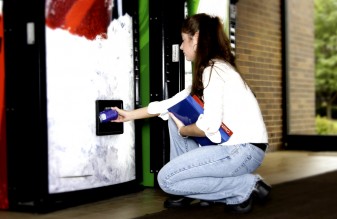
The regulations set limits for fat, salt and sugar sold in places such as vending machines and snack bars. School foods must contain at least 50% whole grains or have a fruit, vegetable, dairy or protein as the first ingredient. Foods that contain at least ¼ cup of fruit and/or vegetables will also be allowed.
Beverages will be under the microscope as well. Sports drinks, which contain relatively high amounts of sugar, are prohibited. Low-fat and fat-free milk, 100% fruit and vegetable juice, and no-calorie flavored waters are permitted. Potable water must be made available to kids for free where meals are served.
Schools and food and beverage companies must meet these standards by July 1, 2014, according to the USDA. That means the rules would be in effect for the 2014-2015 school year….
…\”Nothing is more important than the health and well-being of our children,\” USDA Secretary Tom Vilsack said in a statement. \”Parents and schools work hard to give our youngsters the opportunity to grow up healthy and strong, and providing healthy options throughout school cafeterias, vending machines, and snack bars will support their great efforts.\”
Children will still be allowed to bring in any snacks from home that they choose, and parents can continue to deliver treats for birthday celebrations or holidays to the classroom. Special fund-raising events such as bake sales are also allowed.
Image: School vending machine, via Shutterstock




